Don’t invest unless you’re prepared to lose all the money you invest. This is a high‑risk investment and you should not expect to be protected if something goes wrong. Take 2 mins to learn more.
Buy Optimism (OP) in UK With GBP | CoinJar
Optimism
OP
What is Optimism?
Buy Optimism (OP): What is Optimism (OP) and how does it make Ethereum better? Learn how this Layer 2 solution speeds up transactions and decreases fees for everyone.
Why is Ethereum so slow and expensive?
Imagine Ethereum as a busy highway. When lots of cars (transactions) want to use it at once, traffic jams happen, and tolls (fees) get really uncompetitive. This is a problem because Ethereum is like the internet of money – it's where you can do all sorts of cool things with cryptocurrency, but it can get frustrating when it's slow and uncompetitive.
The Optimism solution
Optimism is like building a super-efficient express lane next to the main Ethereum highway. This express lane is called a "Layer 2" solution. Here's how it helps.
Bundling up
Instead of each car paying its own toll and taking up space, Optimism bundles a bunch of cars (transactions) together. This means fewer "cars" on the main highway, so traffic flows more smoothly.
Paying later
Optimism doesn't make each car pay its toll right away. It records all the "trips" on the express lane and then sends a summary to the main highway later. This saves a lot of time and hassle.
What's the OP token for?
The OP token is like a special membership card for the Optimism express lane. Here's why people buy it:
Voting power
If you own OP tokens, you get to vote on how the express lane is run. You can help decide things like what improvements to make or what the "toll" prices should be.
Rewards
Some people earn OP tokens for helping to keep the express lane running smoothly. It's like getting paid to be a traffic controller!
Advantages of using Optimism
Optimism makes Ethereum much more usable for everyone. Here's what it means for you:
Efficient transactions
Things happen quickly on the express lane, so you don't have to wait around forever for your transactions to go through.
Competitive fees
Bundling up transactions and paying tolls later means it costs less to use Ethereum.
More innovation
With an efficient and competitive Ethereum, developers can create even better apps and services on the blockchain.
Is Optimism safe?
This is subjective based on your risk appetite but in relation to IT protection, while Optimism is a separate "lane", it's still connected to the main Ethereum highway. This means it gets the same protection as Ethereum, which is one of the most protected blockchains in the world. There is always a risk of a cyber attack.
Conclusion: Optimism (OP)
Optimism is just one of many projects trying to make Ethereum efficient and competitive. As more people use Ethereum for exciting new things, solutions like Optimism will become even more important in making this technology accessible to everyone.








Cash, credit or crypto?
Buy Optimism using Visa or Mastercard. Get cash in your account with Faster Payments Service (FPS). Convert crypto-to-crypto with a single click.How to buy Optimism with CoinJar
Start your cryptocurrency portfolio with CoinJar by following these steps.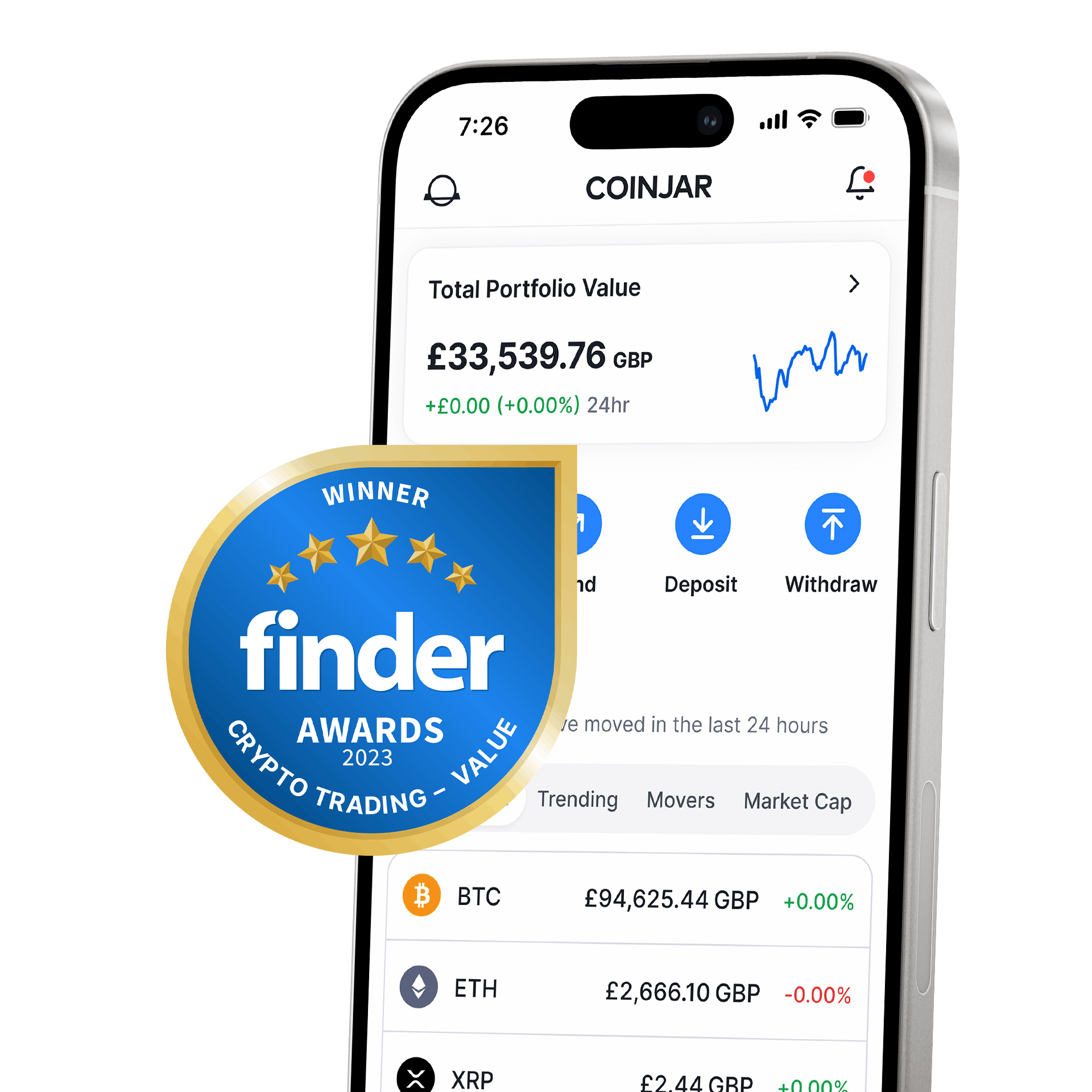
Finder Awards Winner 2023
CRYPTO TRADING - VALUEFinder Awards Winner 2023
CRYPTO TRADING - VALUE
Featured In


CoinJar App
All-in-one crypto walletCoinJar App
All-in-one crypto wallet
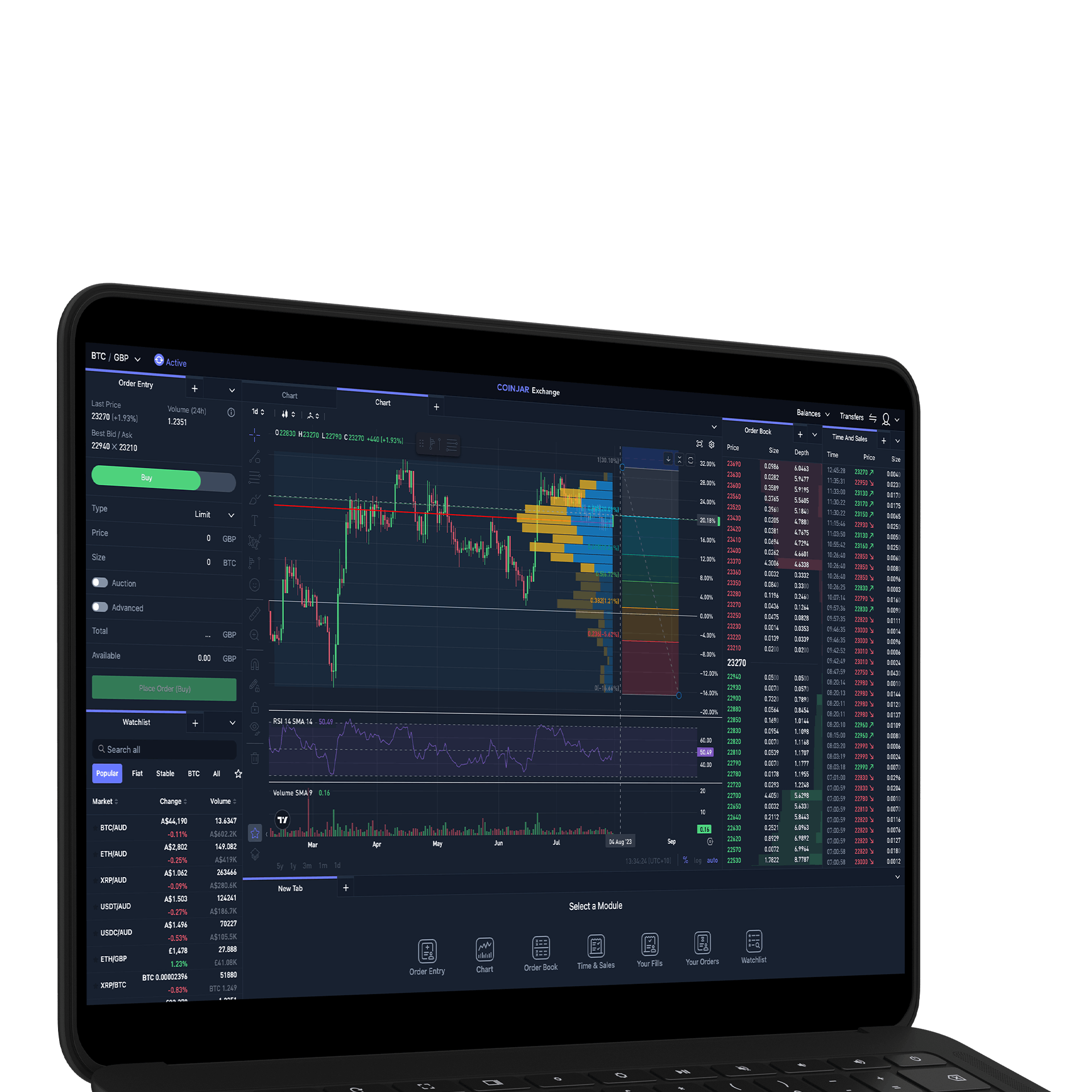
CoinJar Exchange
FOR PROFESSIONAL CRYPTO TRADERS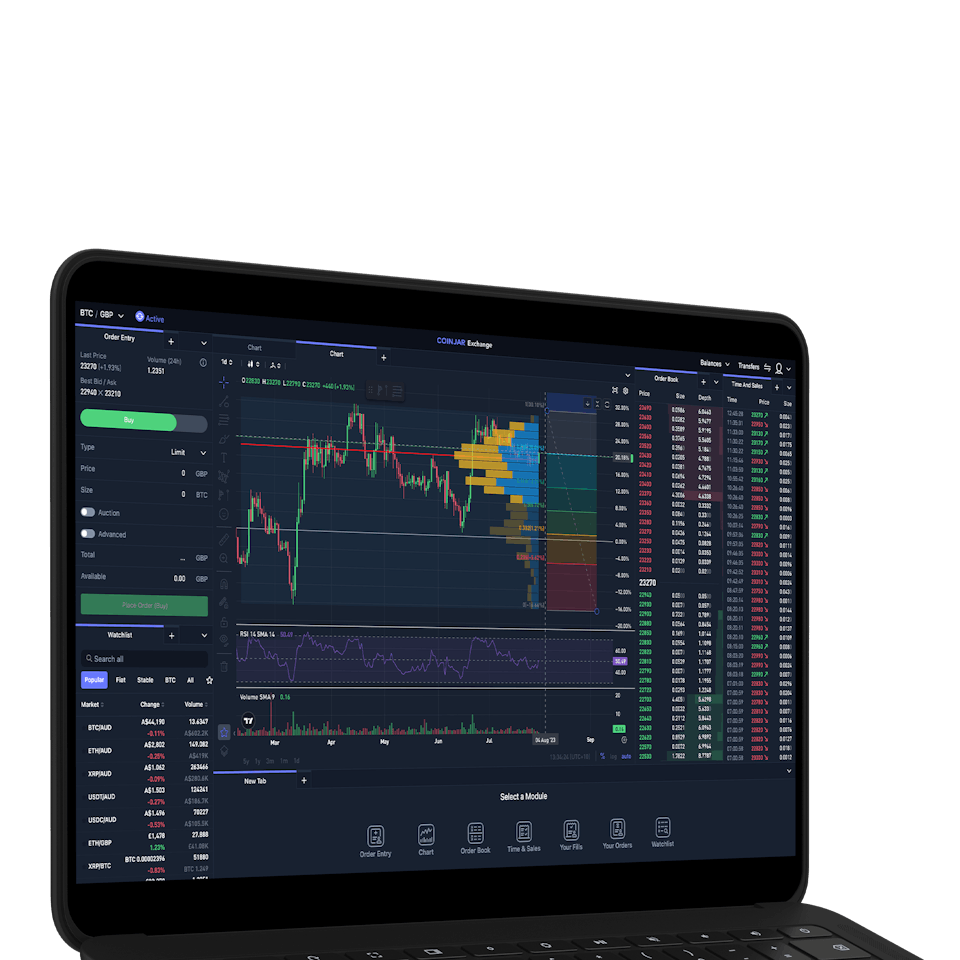
CoinJar Exchange
FOR PROFESSIONAL CRYPTO TRADERS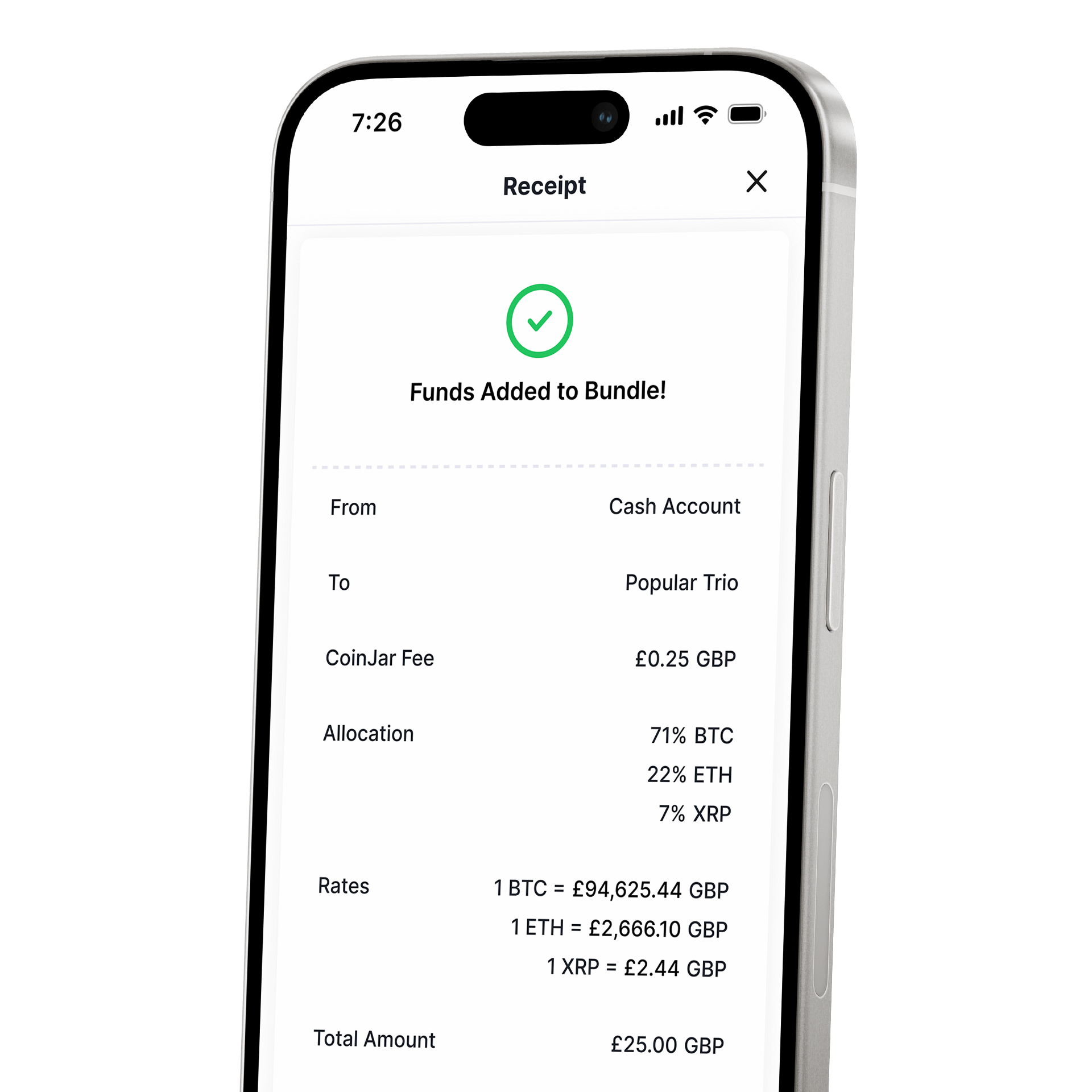
CoinJar DCA & Bundles
AUTOMATE & DIVERSIFY YOUR PORTFOLIOCoinJar DCA & Bundles
AUTOMATE & DIVERSIFY YOUR PORTFOLIO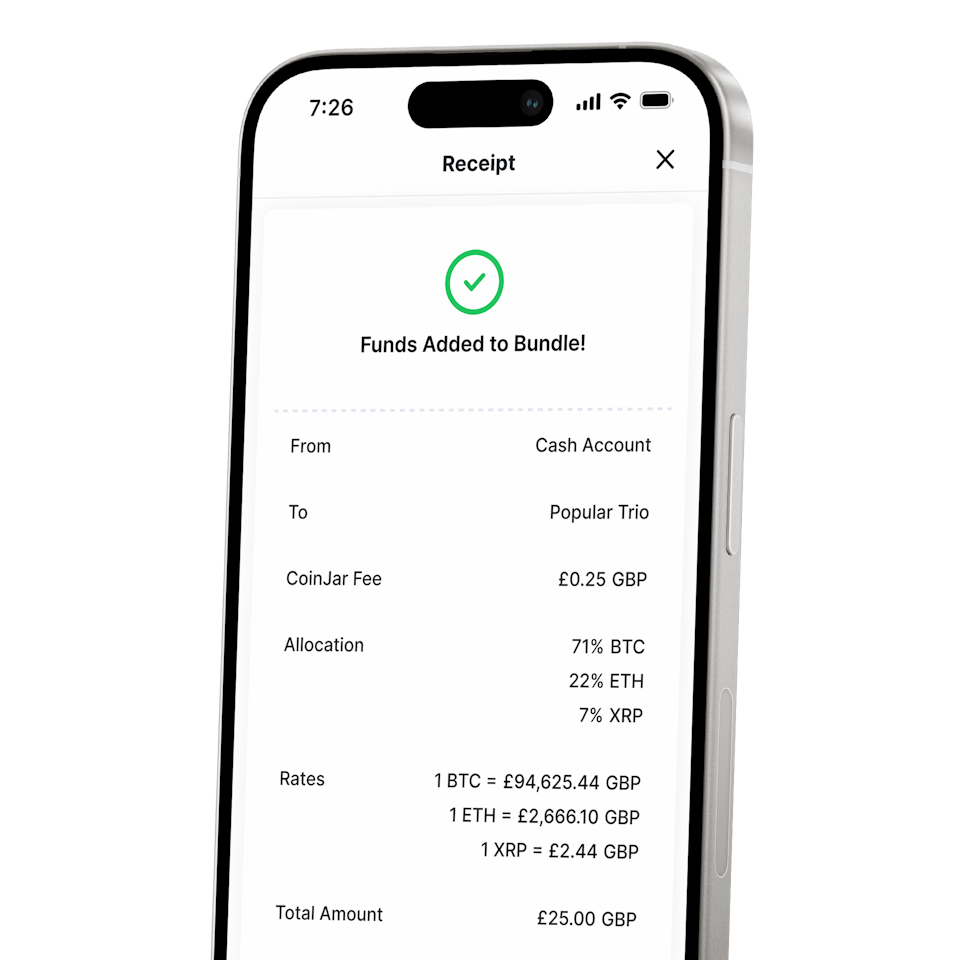
Frequently asked questions
How does Optimism (OP) work within the Ethereum ecosystem?
Optimism leverages Optimistic Rollups, a Layer 2 scaling solution. This means transactions are processed on Optimism's chain, but the data is ultimately submitted to Ethereum for protection. This allows Optimism to inherit Ethereum's robust protection while significantly increasing transaction speed and reducing fees.
What are Optimism's aims within the broader Ethereum ecosystem?
Optimism aims to scale Ethereum to accommodate widespread adoption. It focuses on making transactions efficient, competitive, and more accessible for users and developers alike.
Additionally, Optimism is building a collaborative and sustainable ecosystem around public goods funding.
What is retroactive public goods funding, and how does it relate to Optimism?
Optimism has pioneered retroactive public goods funding. This innovative mechanism rewards projects that have already provided value to the community.
Projects are selected based on their impact and contribution to the Optimism Collective, the community-driven governance body of the Optimism ecosystem
How does Optimism use Optimistic Rollups to achieve its goals?
Optimism employs Optimistic Rollups to bundle transactions off-chain. These bundles are then submitted to Ethereum as a single transaction, significantly reducing the load on the Ethereum network and making transactions efficient and competitive.
What is the role of OP tokens in the Optimism ecosystem?
OP tokens are the governance tokens of the Optimism Collective. They grant holders voting rights to participate in decisions about the future development and direction of the Optimism ecosystem. Token holders can also delegate their voting power to others.
How does Optimism ensure the protection of my transactions?
Optimism relies on Ethereum for protection. While transactions are processed on Optimism, they are ultimately anchored to the Ethereum blockchain. This ensures that Optimism's protection is as strong as Ethereum's underlying infrastructure.
What are some real-world examples of projects built on Optimism?
Numerous projects have been built on Optimism, spanning various sectors such as DeFi, NFTs, gaming, and social impact initiatives. Popular examples include Synthetix, Uniswap, and Aavegotchi, to name a few.
How is the OP token supply managed?
The OP token has a fixed maximum supply. New tokens are primarily distributed through retroactive public goods funding rounds and rewards for active participation in the Optimism ecosystem.
These mechanisms incentivise contributions to the collective's growth.
What is the role of the Optimism Foundation?
The Optimism Foundation is a non-profit organisation dedicated to supporting the development and growth of the Optimism ecosystem. It oversees various initiatives, including grants, educational programs, and community-building efforts.
What is the current state of the Optimism ecosystem?
The Optimism ecosystem is thriving, with a growing community of developers, users, and projects.
It has successfully processed billions of dollars in transactions, demonstrating its scalability and potential to revolutionise how we interact with blockchain technology.
How does Optimism work?
Optimism is a Layer 2 scaling solution for Ethereum, meaning it sits on top of the existing Ethereum blockchain. It uses a technology called optimistic rollups to bundle transactions together and process them off-chain. This allows Optimism to significantly increase transaction speed and reduce fees while still relying on the protection of Ethereum's mainnet.
Is Optimism compatible with Ethereum code and infrastructure?
Yes, one of Optimism's key advantages is its compatibility with existing Ethereum code and infrastructure. Developers can conveniently port their Ethereum applications to Optimism without needing to make major changes, making it a seamless transition for both users and developers.
How long does it take to transfer funds from Optimism to Ethereum?
The withdrawal process from Optimism to Ethereum involves a protection period. Third-party bridges offer timely withdrawals, sometimes within 24 hours, but these services may come with additional fees.
Standard Risk Warning: The above article is not to be read as investment, legal or tax advice and it takes no account of particular personal or market circumstances; all readers should seek independent investment advice before investing in cryptocurrencies.
The article is provided for general information and educational purposes only, no responsibility or liability is accepted for any errors of fact or omission expressed therein. Past performance is not a reliable indicator of future results.
We use third party banking, safekeeping and payment providers, and the failure of any of these providers could also lead to a loss of your assets. We recommend you obtain financial advice before making a decision to use your credit card to purchase cryptoassets or to invest in cryptoassets. Capital Gains Tax may be payable on profits.
CoinJar's digital currency exchange services are operated in the UK by CoinJar UK Limited (company number 8905988), registered by the Financial Conduct Authority as a Cryptoasset Exchange Provider and Custodian Wallet Provider in the United Kingdom under the Money Laundering, Terrorist Financing and Transfer of Funds (Information on the Payer) Regulations 2017, as amended (Firm Reference No. 928767). In the UK, it's legal to buy, hold, and trade crypto, however cryptocurrency is not regulated in the UK.
It's vital to understand that once your money is in the crypto ecosystem, there are no rules to protect it, unlike with regular investments. You should not expect to be protected if something goes wrong. So, if you make any crypto-related investments, you're unlikely to have recourse to the Financial Services Compensation Scheme (FSCS) or the Financial Ombudsman Service (FOS) if something goes wrong.
The performance of most cryptocurrency can be highly volatile, with their value dropping as quickly as it can rise. Past performance is not an indication of future results. Remember: Don't invest unless you're prepared to lose all the money you invest. This is a high-risk investment and you should not expect to be protected if something goes wrong. Take 2 mins to learn more at: https://www.coinjar.com/uk/risk-summary.
UK residents are required to complete an assessment to show they understand the risks associated with what crypto/investment they are about to buy, in accordance with local legislation. Additionally, they must wait for a 24-hour "cooling off" period, before their account is active, due to local regulations. If you use a credit card to buy cryptocurrency, you would be putting borrowed money at a risk of loss.
We recommend you obtain financial advice before making a decision to use your credit card to purchase cryptoassets or to invest in cryptoassets.
Specific risks associated with DeFi tokens Decentralised Finance (or 'DeFi') tokens (e.g. UNI, AAVE) are crypto-assets linked to financial applications and protocols built on decentralised blockchain technology. DeFi tokens carry the following risks:
Smart contract risk: DeFi relies heavily on smart contracts. Even a minor coding error or oversight can lead to a contract being exploited, potentially resulting in significant losses for DeFi tokens.
Regulatory risk: DeFi operates in a decentralised manner, often without intermediaries or financial crime controls. Regulatory bodies across jurisdictions might introduce new regulations impacting the use, value, or legality of certain DeFi protocols or assets.
Rug-pulls / Exit scams: Some DeFi projects might be launched by anonymous or pseudonymous teams, increasing the risk of "rug pulls" where developers abandon the project and withdraw funds, leaving investors with worthless tokens.
Data/oracle risk: DeFi protocols often rely on external data sources or 'oracles. Manipulation or inaccuracies in these data sources can lead to unintended financial outcomes within the protocols. Protocol complexity: The complexity of some DeFi protocols can make it difficult for average users to fully understand the mechanisms and associated risks.
Specific risks associated with meme coins:
'Meme coins' (e.g. DOGE, SHIB, PEPE) are crypto-assets whose value is driven primarily by community interest and online trends.
Meme coins carry the following risks:
Volatility risk: Meme coins can have extreme price volatility, often experiencing rapid and unpredictable price fluctuations within short periods. The value of meme coins can be influenced by social media trends, celebrity endorsements, and other factors unrelated to traditional investment fundamentals. Lack of utility: Meme coins often lack intrinsic value or utility, being primarily driven by community interest, online trends, and speculative trading.
Market manipulation: Meme coins may be susceptible to increased risk of market manipulation including 'pump-and-dump' schemes, where the price is artificially inflated followed by a sudden crash.
Lack of transparency: Meme coins may have limited available information about their development teams, goals, and financials. This lack of transparency can make it challenging to assess the credibility and potential of a meme coin accurately.
Emotional investing: Meme coins often garner strong emotional reactions from investors, leading to impulsive decisions. Emotional trading activity can amplify losses.
Specific risks associated with stablecoins:
There is a risk that any particular stablecoin may not hold their value as against any fiat currency; or may not hold their value as against any other asset. Stablecoins carry the following risks:
Depegging events: Depegging events may occur with stablecoins that fail to maintain adequate controls and risk mitigants. A depegging event is when the value of the stablecoin no longer matches the value of the underlying asset. This could result in a loss of some or all of your investment.
Counterparty risk: Counterparty risk arises when an asset is backed by collateral, involving a third party maintaining the collateral, which introduces risk if the party becomes insolvent or fails to maintain it.
Redemption risk: Redemption risk refers to the possibility that an asset's ability to be redeemed for underlying collateral may not be as anticipated during market fluctuations or operational issues.
Collateral risk: Collateral risk refers to the possibility of the collateral's value declining or becoming volatile, potentially impacting the asset's stability, particularly when it is another crypto-asset.
Exchange rate fluctuations: Stablecoins, often denominated in US Dollars, expose investors to fluctuations in the USD:GBP exchange rate. Algorithmic risk: Algorithm risk refers to the possibility of an asset's stability being compromised due to unexpected failure or behaviour of the underlying algorithm, potentially leading to loss of value.
CoinJar does not endorse the content of, and cannot guarantee or verify the safety of any third-party websites. Visit these websites at your own risk.
Your information is handled in accordance with CoinJar’s Privacy Policy.
Cryptoassets traded on CoinJar UK Limited are largely unregulated in the UK, and you are unable to access the Financial Service Compensation Scheme or the Financial Ombudsman Service.
We use third party banking, safekeeping and payment providers, and the failure of any of these providers could also lead to a loss of your assets.
We recommend you obtain financial advice before making a decision to use your credit card to purchase cryptoassets or to invest in cryptoassets. Capital Gains Tax may be payable on profits.
CoinJar’s digital currency exchange services are operated in the UK by CoinJar UK Limited (company number 8905988), registered by the Financial Conduct Authority as a Cryptoasset Exchange Provider and Custodian Wallet Provider in the United Kingdom under the Money Laundering, Terrorist Financing and Transfer of Funds (Information on the Payer) Regulations 2017, as amended (Firm Reference No. 928767).
Apple Pay and Apple Watch are trademarks of Apple Inc. Google Pay is a trademark of Google LLC.
This site is protected by reCAPTCHA and the Google Privacy Policy and Terms of Service apply.

